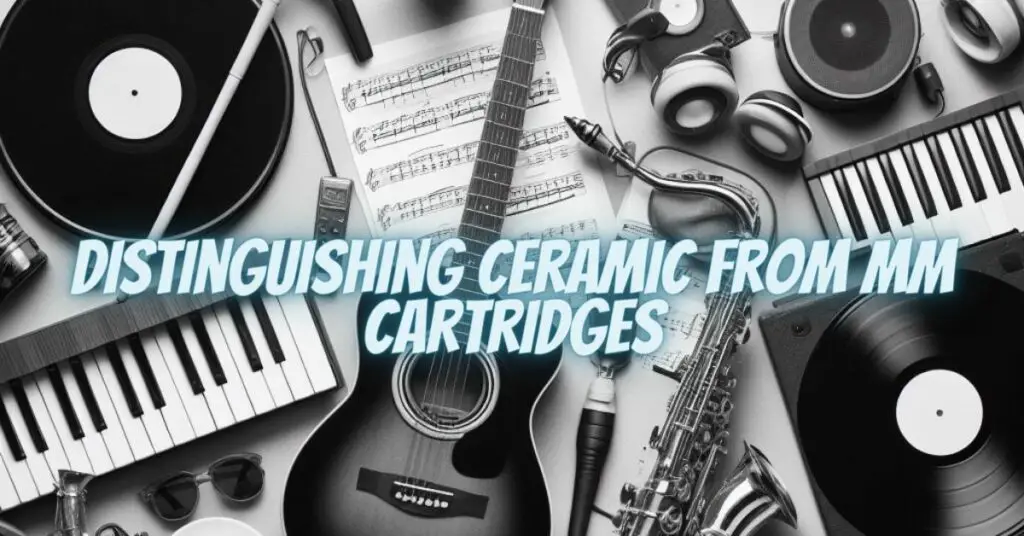When it comes to turntable cartridges, there is a wide variety to choose from, each with its unique characteristics and advantages. Two common types are ceramic cartridges and Moving Magnet (MM) cartridges, both of which offer distinct listening experiences. In this article, we’ll explore the differences between ceramic and MM cartridges, helping you understand their respective strengths and considerations.
Ceramic Cartridges:
- Transducer Technology: Ceramic cartridges utilize a piezoelectric crystal as their transducer element. When the stylus moves along the grooves of a vinyl record, it flexes the crystal, generating an electrical voltage that corresponds to the audio signal. This electrical signal is then sent to the amplifier or speakers for playback.
- Output Voltage: Ceramic cartridges typically produce a higher output voltage compared to MM cartridges. This means they are more compatible with a broader range of amplifiers and can drive power-hungry systems more effectively.
- Stylus and Tracking: Ceramic cartridges are generally equipped with a spherical stylus. While this stylus type is less sensitive to tracking force, it may have limitations in capturing the finer details of the record’s grooves compared to some MM cartridges with elliptical or fine-line styli.
- Sound Signature: Ceramic cartridges often have a characteristic sound signature. They are known for producing a warm and full-bodied sound with a particular emphasis on the midrange frequencies. Some listeners appreciate the vintage or retro charm of ceramic cartridges.
MM (Moving Magnet) Cartridges:
- Transducer Technology: MM cartridges use a moving magnet design. A tiny permanent magnet is attached to the cantilever, and it moves within a set of fixed coils to generate an electrical signal. This design is more common and has been refined over the years.
- Output Voltage: MM cartridges tend to produce a lower output voltage compared to ceramic cartridges. As a result, they may require a phono preamplifier with greater gain to reach the appropriate line-level signal for amplification.
- Stylus and Tracking: MM cartridges come in a range of stylus shapes, including elliptical, fine-line, and others. This diversity allows for improved tracking ability and the ability to retrieve finer details from the record’s grooves.
- Sound Signature: MM cartridges are often preferred for their versatility and fidelity. They are known for providing a balanced, accurate, and transparent sound, making them suitable for a wide range of musical genres and audiophile listening.
Key Differences and Considerations:
- Output Voltage: One of the most significant distinctions is the output voltage. Ceramic cartridges typically have a higher output, making them easier to integrate into various audio systems. MM cartridges have a lower output and may require a compatible phono stage for optimal performance.
- Sound Signature: The sound signature varies between the two types. Ceramic cartridges are known for their vintage warmth and midrange emphasis, while MM cartridges tend to provide a more transparent and balanced sound.
- Stylus Options: MM cartridges offer a wider variety of stylus shapes, allowing for improved tracking and fidelity. This flexibility is especially important for those who value audio accuracy.
- Price and Availability: Ceramic cartridges are often more affordable and readily available, while MM cartridges come in a broader range of price points and quality levels.
The choice between ceramic and MM cartridges depends on your specific preferences, budget, and audio system. Ceramic cartridges can be an appealing choice for those who appreciate a retro, warm sound and high output. MM cartridges, on the other hand, are favored for their versatility, accuracy, and the ability to retrieve finer musical details. Ultimately, the decision comes down to your listening preferences and the type of listening experience you seek from your turntable setup.

